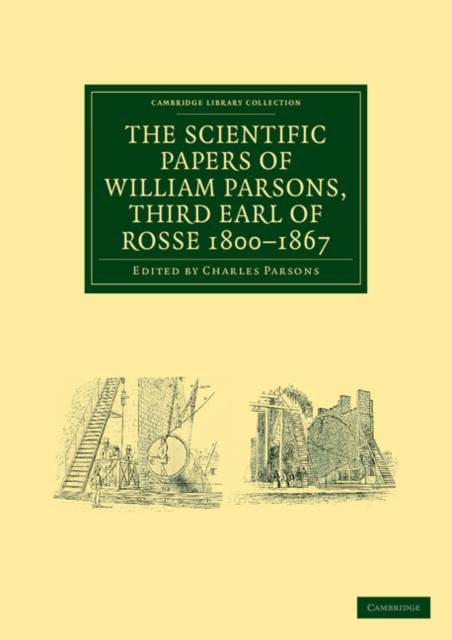
- Afhalen na 1 uur in een winkel met voorraad
- Gratis thuislevering in België vanaf € 30
- Ruim aanbod met 7 miljoen producten
- Afhalen na 1 uur in een winkel met voorraad
- Gratis thuislevering in België vanaf € 30
- Ruim aanbod met 7 miljoen producten
Zoeken
The Scientific Papers of William Parsons, Third Earl of Rosse 1800-1867
William Parsons
€ 83,95
+ 167 punten
Omschrijving
William Parsons (1800-67), third Earl of Rosse, was responsible for building in 1845 the largest telescope of his time, nicknamed the 'Leviathan'. It enabled the Earl to make unprecedented astronomical discoveries, including the discovery of the spiral nature of galaxies. Rosse (then Lord Oxmantown) began publishing scientific papers on telescopes in 1828, and for the rest of his life made regular contributions to scientific journals in Ireland, England and Scotland. He served as President of the British Association for the Advancement of Science in 1843, and of the Royal Society from 1848 to 1854, and his addresses to those societies are also included in this collection. Edited by his younger son, the engineer Sir Charles Parsons (1854-1931) and published in 1926, these papers show the wide range of the Earl's interests, from astronomy and telescopes to ancient bronze artefacts and the use of iron in shipbuilding.
Specificaties
Betrokkenen
- Auteur(s):
- Uitgeverij:
Inhoud
- Aantal bladzijden:
- 260
- Taal:
- Engels
- Reeks:
Eigenschappen
- Productcode (EAN):
- 9781108038072
- Verschijningsdatum:
- 3/11/2011
- Uitvoering:
- Paperback
- Formaat:
- Trade paperback (VS)
- Afmetingen:
- 210 mm x 297 mm
- Gewicht:
- 630 g

Alleen bij Standaard Boekhandel
+ 167 punten op je klantenkaart van Standaard Boekhandel
Beoordelingen
We publiceren alleen reviews die voldoen aan de voorwaarden voor reviews. Bekijk onze voorwaarden voor reviews.








